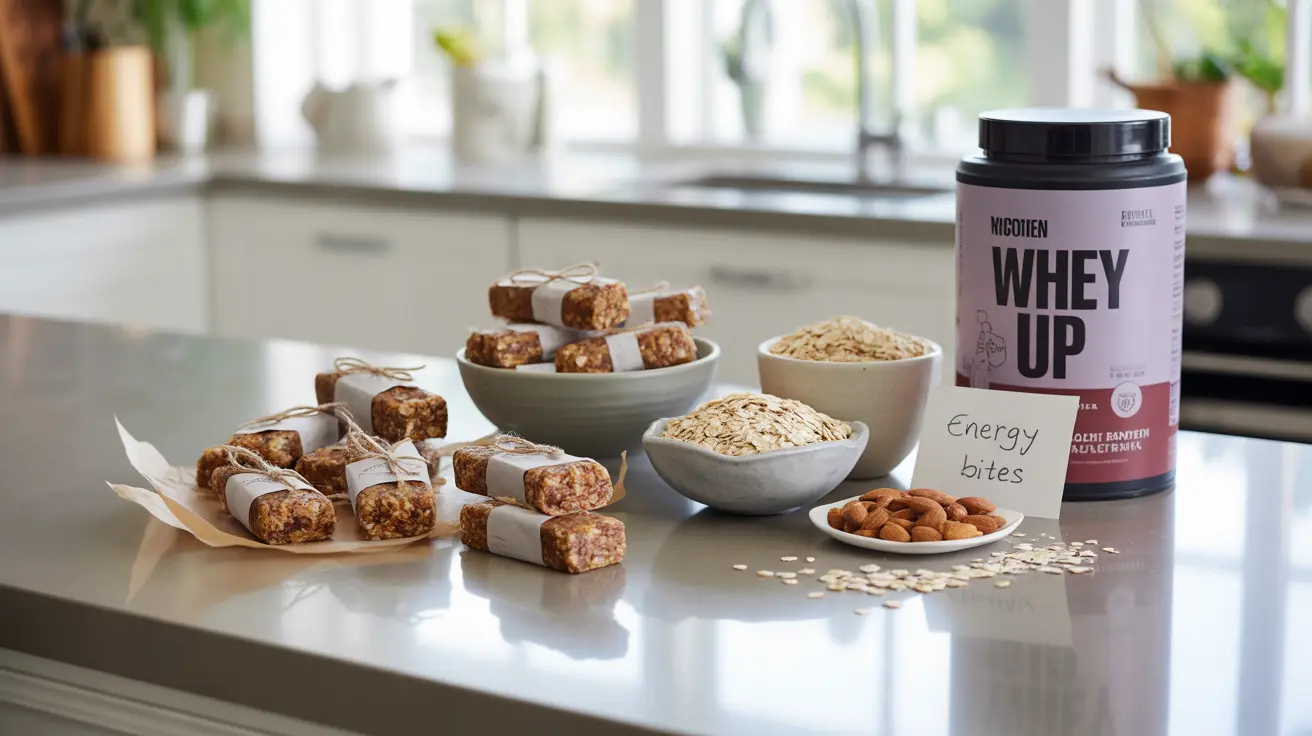Making informed choices about protein bars can significantly impact your weight loss journey. While these convenient snacks can support your fitness goals, not all protein bars are created equal when it comes to weight management. Understanding how to choose and even make your own protein bars can help you maintain a healthy diet while working toward your weight loss objectives.
In this comprehensive guide, we'll explore both store-bought and homemade protein bars, examining their role in weight loss, key ingredients to look for, and how to incorporate them effectively into your diet plan.
Understanding Protein Bars and Weight Loss
Protein bars can be valuable tools for weight loss when used correctly. They provide concentrated nutrition in a convenient format, helping to maintain muscle mass while creating a caloric deficit. The high protein content helps promote satiety, potentially reducing overall calorie intake throughout the day.
Homemade vs. Store-Bought Protein Bars
Benefits of Homemade Protein Bars
Making your own protein bars offers several advantages for weight loss:
- Complete control over ingredients
- No artificial preservatives or hidden sugars
- Cost-effective in the long run
- Customizable to your dietary needs
- Fresh, whole food ingredients
Store-Bought Protein Bar Considerations
When choosing commercial protein bars for weight loss, look for these characteristics:
- 200 calories or less per bar
- Minimum 15g of protein
- Less than 10g of sugar
- At least 3g of fiber
- Short, recognizable ingredient list
Essential Ingredients for Weight Loss-Friendly Protein Bars
Creating effective protein bars for weight loss requires careful ingredient selection:
Protein Sources
- Whey protein isolate
- Pea protein
- Brown rice protein
- Hemp protein
Healthy Binders
- Greek yogurt
- Nut butters (in moderation)
- Egg whites
- Coconut flour
Natural Sweeteners
- Stevia
- Monk fruit extract
- Erythritol
- Mashed banana
Smart Consumption Guidelines
To maximize the benefits of protein bars for weight loss:
- Limit consumption to 1-2 bars daily
- Use as meal replacements or post-workout snacks
- Pay attention to portion sizes
- Consider timing around workouts
- Track total daily calorie intake
Frequently Asked Questions
How do homemade protein bars help with weight loss compared to store-bought bars?
Homemade protein bars typically contain fewer preservatives, added sugars, and artificial ingredients than store-bought options. You can control the calorie content and use whole food ingredients, making them more effective for weight loss when properly portioned.
What ingredients should I use to make low-calorie, high-protein bars for weight loss?
Focus on lean protein sources like whey isolate or pea protein, use fiber-rich ingredients such as oats or coconut flour, and incorporate natural sweeteners like stevia. Add small amounts of healthy fats from nuts or seeds for satiety.
Can protein bars really reduce appetite and cravings during a weight loss diet?
Yes, protein bars can help reduce appetite and cravings when formulated correctly. The combination of protein and fiber helps promote fullness, while controlled portions of healthy fats provide sustained energy release.
How many protein bars can I safely eat per day while trying to lose weight?
Generally, limit consumption to 1-2 protein bars per day, ensuring they fit within your total daily calorie goals. Use them strategically as meal replacements or post-workout snacks rather than additional snacks.
What should I look for in commercial protein bars to ensure they support weight loss?
Choose bars with 200 calories or less, at least 15g of protein, less than 10g of sugar, and minimal artificial ingredients. Check the fiber content (aim for 3g or more) and avoid bars with hydrogenated oils or high fructose corn syrup.




